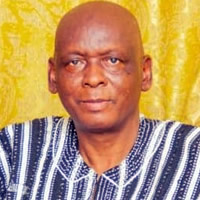Ethnicity
Ethnicity refers to the ethnic group to which a person belongs. This information is collected only from Ghanaians by birth and Ghanaians with dual nationality. Tables 3.8 and 3.9 present data on Ghanaians by ethnic group and by district in the Upper West Region. The data show clearly that Mole-Dagbani is the predominant ethnic group in the region with 73.0% out of a Ghanaian population of 675,367.
There are, however, district variations. The Mole-Dagbani form an overwhelming majority in almost all the districts – Jirapa (96.4%), Lawra (96.5%), Nadowli (88.3%), Wa Municipal (80.4%), Wa West (79.4%), Wa East (69.1%), Lambussie Karni (58.0%) – except Sissala East (4.3%) and Sissala West (23.1%) where the Grusi ethnic group forms the majority. Other indigenous ethnic groupings collectively constituted an additional 2.3 percent of the population in the region, while all Akan ethnic groups put together constitute 1.2 percent.
Religion
There are three main religions in the region. Christianity (comprising Catholics, Protestants, Pentecostal/Charismatic, and other denominations) leads with 44.5 percent, followed by Islam (35.6%) and African traditional religions (13.9%).
Christians constitute the largest religious group in five of the nine districts – Lawra (72.3%), Jirapa (65.9%), Nadowli (62.8%), Lambussie Karni (50.7%) and Wa West (38.5%). It can be seen that Christians have a very strong presence in Lawra.
Islam, on the other hand, has its strongest presence in Sissala East (88.0%), Sissala West (70.3%), Wa Municipal (65.9%) and Wa East (57.9%). Adherents of traditional religion are largely in Wa West with 29.5% of the population and a fairly good presence in Lambussie Karni (19.2%), Jirapa (18.8%) and Lawra (16.9%).
Catholics constitute the majority of Christians in all districts, ranging from a low 5.5 percent in Sissala East to a high 63.9 percent in Lawra. The Pentecostal/Charismatic group is the second largest denomination, after Catholics. Others include.
There is a slight variation between male and female adherents. Female Christians are more than their male counterparts in almost all the districts except in Wa Municipal where the percentage is lower for the female Christians than their male counterpart. On the other hand the percentage of female Islam adherents is higher for males than for females in almost all the districts except in Wa Municipal where more females than males profess the Islam religion.
Date Created : 11/28/2017 8:02:24 AM





 facebook
facebook twitter
twitter Youtube
Youtube TOLL FREE 0800 430 430
TOLL FREE 0800 430 430 +233 593 831 280
+233 593 831 280 GPS: GE-231-4383
GPS: GE-231-4383 info@ghanadistricts.com
info@ghanadistricts.com Box GP1044, Accra, Ghana
Box GP1044, Accra, Ghana